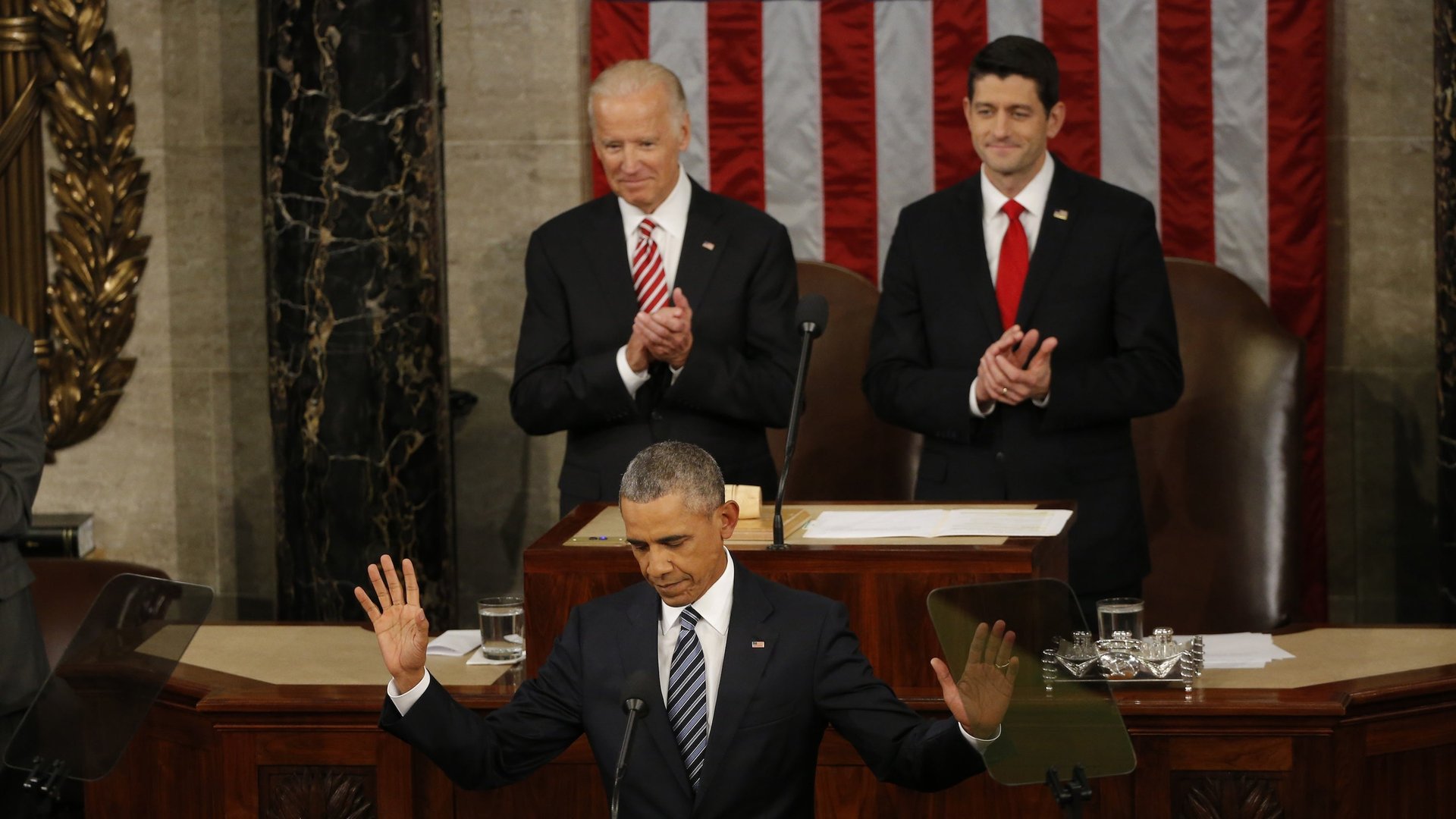Politics aren’t more partisan today–we’re just fighting about more issues
Last night’s State of the Union speech was shaped by the perception that we are in a catastrophic moment of political polarization. “It’s one of the few regrets of my presidency — that the rancor and suspicion between the parties has gotten worse instead of better,” president Obama admitted.


Last night’s State of the Union speech was shaped by the perception that we are in a catastrophic moment of political polarization. “It’s one of the few regrets of my presidency — that the rancor and suspicion between the parties has gotten worse instead of better,” president Obama admitted.
There’s no doubt that today’s Congress is characterized by deep enmity between Republicans and Democrats. However, while most commentary tends to cast partisan rancor as a problem that has increased over the last decade, analysis of Congressional voting patterns suggests otherwise. The American Political Science Association task force found that polarization has actually been increasing consistently in both the House and the Senate since the 1970s. What’s new is the breadth and depth of polarization over specific issues.
The scholars suggest that the root causes of the political divide can be traced back to the post-1960s realignment of the South, when both parties underwent an ideological reshuffling. The fact that this happened in the Senate as well as the House, and among politicians with both safe and competitive seats, suggests that redistricting won’t solve the partisan problem. The scholars’ findings also suggest that members of Congress have structural reasons for behaving as they do. No matter how many heart-to-hearts Barack Obama and Paul Ryan have about their teenage daughters, Joe Biden has a better chance of flying to the moon than restoring legislative effectiveness through bipartisan comity.
What has changed is the number of policies that the parties are fighting over at any given time.
Take national security, formerly one of the least-polarized areas in American political life. In 2008, Obama and then-Republican candidate John McCain listed closing the prison at Guantánamo Bay and ending torture among their policy goals.
Today, both issues are divided along purely partisan lines, as their stony reception during Obama’s Jan. 12 speech reminded us. Views of the president’s nuclear deal with Iran have also polarized sharply over the years it took to negotiate. While overall numbers on US support for Israel have stayed level, they mask a declining enthusiasm among Democrats and a firm embrace by evangelical Republicans.
The same divide extends to new issues such as the Common Core standards for K-12 education. While the Common Core was developed as a technocratic initiative with broad GOP buy-in, it’s now intensely opposed by Republicans and supported by Democrats. Meanwhile, support for the inherently controversial issue of the death penalty is declining overall—but exponentially faster among Democrats and independents than among Republicans.
Yet there is reason to hope for cross-party collaboration on certain issues. Obama began his speech with a ringing endorsement for criminal justice reform. Broad bipartisan support for changes to sentencing as well as other reforms has been expressed by everyone from the Koch brothers to the Center for American Progress. Even ruby-red Texas has been shifting toward bipartisan cooperation on ending mass incarceration, as my New America colleagues Steve Teles and David Dagan found in a Sep. 2015 report.
New America has studied numerous attempts to build these kinds of “transpartisan” coalitions to beat polarization. It’s a good bet that climate change will also soon attract cross-party collaboration. President Obama tweaked GOP officeholders hard on the issue last night. “If anybody still wants to dispute the science of climate change, have at it,” he said. “You’ll be pretty lonely.”
Obama’s confidence stems from polls showing that the American public has made up its mind: climate change is real. Now the partisan divide is now over how to respond to the problem.
It’s now clear that progress toward bipartisan collaboration over key issues demands patience, investment in trust-building between parties, and a willingness to let politicians and other ideological influencers define the issues and rally supporters in their own ways. We didn’t have many kumbaya moments during Obama’s tenure in the White House, and we’re unlikely to see more in future State of the Union addresses. But it is still possible for politicians to reach across the aisle and get to work.